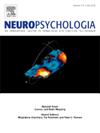The interplay of prior information and motion cues in resolving visual ambiguity in agent perception
IF 2
3区 心理学
Q3 BEHAVIORAL SCIENCES
引用次数: 0
Abstract
Agent perception is essential for social interaction, allowing individuals to interpret and respond to the actions of others within dynamic environments. In this study, we examined whether and if so how prior information and motion information influence the temporal dynamics of perceiving agents. We presented short videos and images of three agents (a human, a robot, and an android) performing various actions while recording EEG. Using temporal representational similarity analysis (RSA) on EEG recordings, we analyzed the representation of agent identities under varying conditions: Still versus Moving stimuli and Prior versus Naive contexts. Our findings revealed that prior information and motion information interact to produce distinct temporal patterns of neural representation of agent identity. In the Naive condition (when no prior knowledge is available), agent processing was prolonged during still presentations compared to moving ones. These results demonstrate how the interplay between prior information and motion information shapes the temporal dynamics of agent perception.

先验信息和运动线索在解决智能体感知视觉模糊中的相互作用。
主体感知对于社会互动至关重要,它允许个体在动态环境中解释和回应他人的行为。在这项研究中,我们研究了先验信息和运动信息是否以及如果是,如何影响感知主体的时间动态。我们展示了三个代理(人类、机器人和机器人)在记录脑电图时执行各种动作的短视频和图像。利用脑电图记录的时间表征相似性分析(RSA),我们分析了不同条件下智能体身份的表征:静止与移动刺激以及先验与朴素情境。我们的研究结果表明,先验信息和运动信息相互作用,产生不同的agent身份的神经表征的时间模式。在朴素条件下(没有可用的先验知识),代理处理在静止呈现时比在移动呈现时要长。这些结果证明了先验信息和运动信息之间的相互作用如何影响智能体感知的时间动态。
本文章由计算机程序翻译,如有差异,请以英文原文为准。
求助全文
约1分钟内获得全文
求助全文
来源期刊

Neuropsychologia
医学-行为科学
CiteScore
5.10
自引率
3.80%
发文量
228
审稿时长
4 months
期刊介绍:
Neuropsychologia is an international interdisciplinary journal devoted to experimental and theoretical contributions that advance understanding of human cognition and behavior from a neuroscience perspective. The journal will consider for publication studies that link brain function with cognitive processes, including attention and awareness, action and motor control, executive functions and cognitive control, memory, language, and emotion and social cognition.
 求助内容:
求助内容: 应助结果提醒方式:
应助结果提醒方式:


